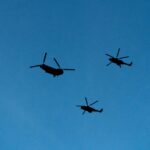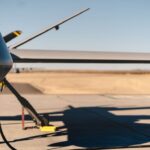The Army has given the green light to start low-rate production of its Indirect Fire Protection Capability Increment 2 system this October. Defense officials confirm that the signed acquisition decision memorandum cleared the final gate after a quick turn-around review on 28 June. According to industry sources, Dynetics, a Leidos company, received the first production task order hours later. The order covers eight launchers, two battle management kits, and initial spares worth about $385 million.
Program managers call the move “production build zero.” It shifts IFPC Inc 2 from engineering builds to hardware that combat units will keep. Fielding starts with the 5th Battalion, 4th Air Defense Artillery at Fort Sill. Our analysis shows that the battalion will operate two platoons by July 2026 and train the schoolhouse cadre at the same time.
IFPC Inc 2 Production Begins with Huntsville and Redstone Arsenal Ramp-Up
Early production centers on the Dynetics factory in Huntsville, Alabama. New tooling arrived in May and passed acceptance tests last week. A second line at Redstone Arsenal will open in January to boost monthly output from two to four launchers. Leidos engineers say the modular work cells let them swap missile canisters without breaking takt time.
The Army’s fiscal-2025 budget includes $682 million for IFPC procurement, enough to buy 16 launchers, 192 AIM-9X interceptors, and four Sentinel A4 radars. The appropriation also funds two reload vehicles and a software baseline upgrade for the Integrated Air and Missile Defense Battle Command System. Congressional marks, issued 27 June, added $45 million for a mission-data library to speed threat file updates.
FY25 Priorities: Launcher Output, Software Support, and Radar Delivery
Immediate actions for FY 25 include:
- Open Huntsville line and qualify weld fixtures.
- Build eight launchers and two command modules.
- Produce 64 AIM-9X Block III missiles in ground-launch configuration.
- Ship the first Sentinel A4 radar to White Sands by December for live-fire.
- Stand up tactical software support teams at Fort Sill and Redstone.
IFPC Inc 2 covers the middle tier of the Army’s air-defense architecture. It bridges Avenger and Maneuver-SHORAD at the low end and Patriot at the high end. Each platoon carries four launchers, one Integrated Battle Command post, a Sentinel radar, and a reload truck. The unit fits on C-17 aircraft without teardown and can roll off ready to fight.
The launcher uses the Multi-Mission Launcher base, but engineers replaced the old wiring harness with a fiber backbone. That cut weight and freed space for a bigger power supply. The canister bay accepts AIM-9X today and Tamir or future interceptors after a single bolt-on adapter. Crews load missiles with a standard Palletized Load System crane, so no special gear follows the battery.
AIM-9X Block III and Sentinel A4: Capabilities in Focus
Core hardware:
- Sentinel A4 radar – 360-degree gallium-nitride array with digital beam steering.
- Integrated Battle Command System – open-architecture fire-control network.
- Multi-Mission Launcher (Block 2) – twelve ready rounds, electric elevation, and auto-leveling outriggers.
- AIM-9X Block III interceptor – imaging infrared seeker, vectored thrust, 18 km effective range.
- Tactical power module – 200 kW diesel generator with lithium-ion buffer pack.
Flight Testing Confirms Interceptor Performance Against Cruise Missiles
Flight testing wrapped up at White Sands on 26 June. The final shot destroyed a surrogate cruise missile that flew at 50 feet above ground and 0.8 Mach. Test officers recorded a direct hit with no pre-planned waypoint update, proving the weapon can engage pop-up threats. Earlier trials covered drone swarms and rocket-artillery salvos.
Reliability numbers also improved. The launcher kept mission-capable status for 502 hours of stress driving in Yuma, beating the 400-hour threshold. The radar met its 95 percent availability goal after software patch 11 removed a spurious overload flag.
Parallel Interceptor Development Targets 30 km Range, Lower Cost
Defense officials confirm that Boeing and Anduril will ship technology demonstrators in March for shoot-off events next summer. The goal is a missile that reaches 30 km and costs under $200 k per round. Sources familiar with the plan say the Army will pick one design for qualification by late 2027, giving batteries a layered magazine without changing the launcher frame.
The production start answers a growing gap highlighted by recent conflicts. Russian drone and cruise-missile attacks on Ukrainian infrastructure showed how low-flying weapons slip past legacy radar arcs. U.S. war-game models ran in February predicted that a peer adversary could overwhelm Patriot batteries with cheap drones, forcing commanders to hold expensive interceptors. IFPC Inc 2 offers a more balanced cost curve, letting forces save high-end rounds for complex threats.
Emerging Doctrines: Goal-Tending and Belt Defense Concepts
Operational planners have already written the first employment concepts. One calls for “mobile goal-tending,” in which two launchers ride with a command post on the move, then drop into firing positions when sensors cue on inbound targets. Another uses “rapid belt defense,” lining launchers along likely threat corridors to thin out long-range attacks before they reach Patriot engagement zones.
Defense officials confirm that the 32nd Army Air and Missile Defense Command will add an IFPC task force to Pacific rotation packages next year. Planners want a battery to train with allies in the Philippines and Japan, where terrain blocks long-range radar lines of sight. Industry insiders say the ruggedized trailer chassis and sealed electronics suit tropical conditions well.
Training Pipeline Streamlined with IFPC-Specific Maintenance and Interface
Training teams from the Fires Center of Excellence finished the first pilot course on 24 June. The syllabus replaces complex multi-step loading drills with a touchscreen wizard. Soldiers who pass the course can bring a cold launcher to ready-to-fire in nine minutes, down from fifteen in earlier builds. The school also signed off new maintenance checklists that cut daily service time by half an hour.
Cybersecurity hardened components made the baseline as well. The launcher shares no common user-level passwords, and the Sentinel radar uses a hardware root of trust. A red-team assessment in May found no critical findings. The command post’s data-at-rest encryption earned an “authorized” rating from Army Cyber Command on 21 June.
Army Eyes Full-Rate Production and Export Interest by 2026
For fiscal-2026 the Army wants full-rate production authority. The milestone depends on three criteria: delivery of twelve production-representative launchers, a second operational test in multiple climates, and validated sustainment costs under $18 k per year, per launcher. The program office projects meeting those marks by April 2026 if current funding stays on track.
Industry sees a long runway. Leidos executives told investors in a 29 June call that the current ceiling value for launcher and software support could exceed $8 billion if the Army builds out all six planned battalions. Suppliers such as Raytheon (seekers) and L3Harris (radar back-ends) have already expanded lines. A Huntsville parts maker hired 80 technicians last month to fabricate canister frames.
Export demand is forming as well. Poland, Romania, and Sweden have each asked for pricing and availability data in the past week, according to officials familiar with Foreign Military Sales inquiries. A recent Swedish IRIS-T SLM deal underscores growing European interest in advanced ground-based air defense. Any sale would start only after U.S. Army fielding stabilizes, but the Integrated Battle Command backbone makes coalition integration simpler than legacy point-defense systems.
Directed Energy and Logistics Integration Remain Future Enhancements
The Army Rapid Capabilities office tested a 20-kW laser module on an IFPC trailer in April. Results met tracking and beam-control goals, though power demand still exceeds the standard generator. The office will down-select a vendor late this year and plans a hard-kill drone shoot in 2026.
Logistics planners value the common truck chassis. The launcher rides on a Family of Medium Tactical Vehicles frame, sharing tires, axles, and electronics with thousands of support trucks in theater. Sustainment command studies estimate a 28 percent lower life-cycle cost than a purpose-built chassis. Each battery fits within the existing tactical wheel fleet, easing deployment loads.
IFPC Network Management Enhancements Aid Theater-Scale Target Tracking
Operational analysts note the importance of network discipline. The Battle Command node pulls composite tracks from radars across the theater. During stress tests last week operators filtered sensor inputs to avoid overload. The software’s auto-correlation feature reduced track duplication by 70 percent, keeping fire-control quality data clear. Engineers will refine the user interface before the first unit fields. The comprehensive approach to IFPC network management helps ensure system reliability and effective battlefield coordination.
Planners remain cautious about ammunition stocks. The Army funds two hundred AIM-9X rounds for the initial fielding but wants a yearly procurement of six hundred to sustain training and readiness. Congress has not yet approved the multi-year missile buy. Without it, units could face tight magazines by 2028.
Maintenance doctrine now treats the launcher as an electronic weapon rather than an artillery piece. Soldiers replace sealed modules instead of troubleshooting at component level. Depot-level repair shops at Letterkenny will handle deeper work. This approach aligns with how the Army sustains Patriot and THAAD, simplifying the training pipeline.
IFPC Program Holds Cost Stability as Fielding Nears
The Selected Acquisition Report dated 28 June shows an over-target baseline increase of 3.4 percent, mainly due to inflation. No schedule breaches remain. The next report is due to Congress in December.
For soldiers on the ground the benefit is simple. They will soon have a weapon that shoots down cruise missiles and drones without draining strategic missile inventories. The launcher crew of two needs no external generator and can reload in under five minutes. The radar sees low-flying targets that older sensors missed. The command network stitches every piece together.
Next visible events:
- 15 July – ribbon-cutting for the expanded Huntsville line.
- August – climatic-chamber check of electronics at Aberdeen.
- September – live-fire demonstration for congressional staff at White Sands.
- October – first launcher accepted for field service.
- November – integration roll-out with Patriot at Fort Sill.
REFERENCE SOURCES
- https://www.youtube.com/watch?v=A5btdBTJkGw
- https://armyrecognition.com/news/army-news/2025/u-s-army-to-strengthen-air-defense-with-indirect-fire-protection-capability-system-production-in-2025
- https://news.ssbcrack.com/u-s-army-set-to-begin-production-of-indirect-fire-protection-capability-ifpc-increment-2-air-defense-system/
- https://worlddefencenews.blogspot.com/2025/06/us-army-to-strengthen-air-defense-with.html
- https://www.army.mil/article/281667/us_army_awards_indirect_fire_protection_capability_inc_2_contract_worth_up_to_4_1_billion
- https://www.leidos.com/insights/leidos-prepares-mass-production-ifpc-inc-2-launchers



